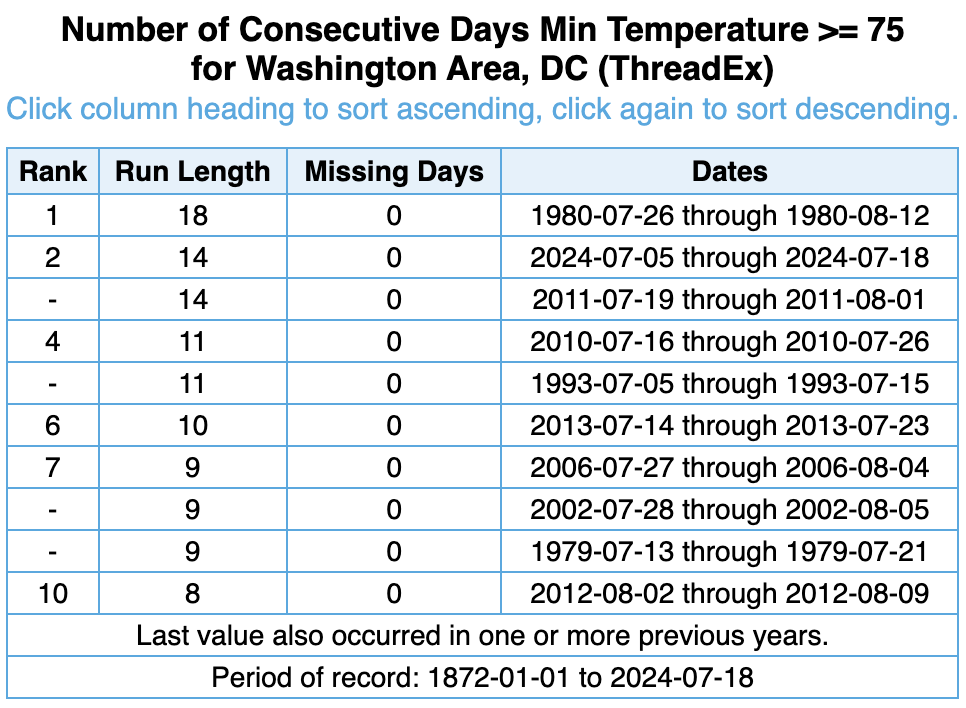
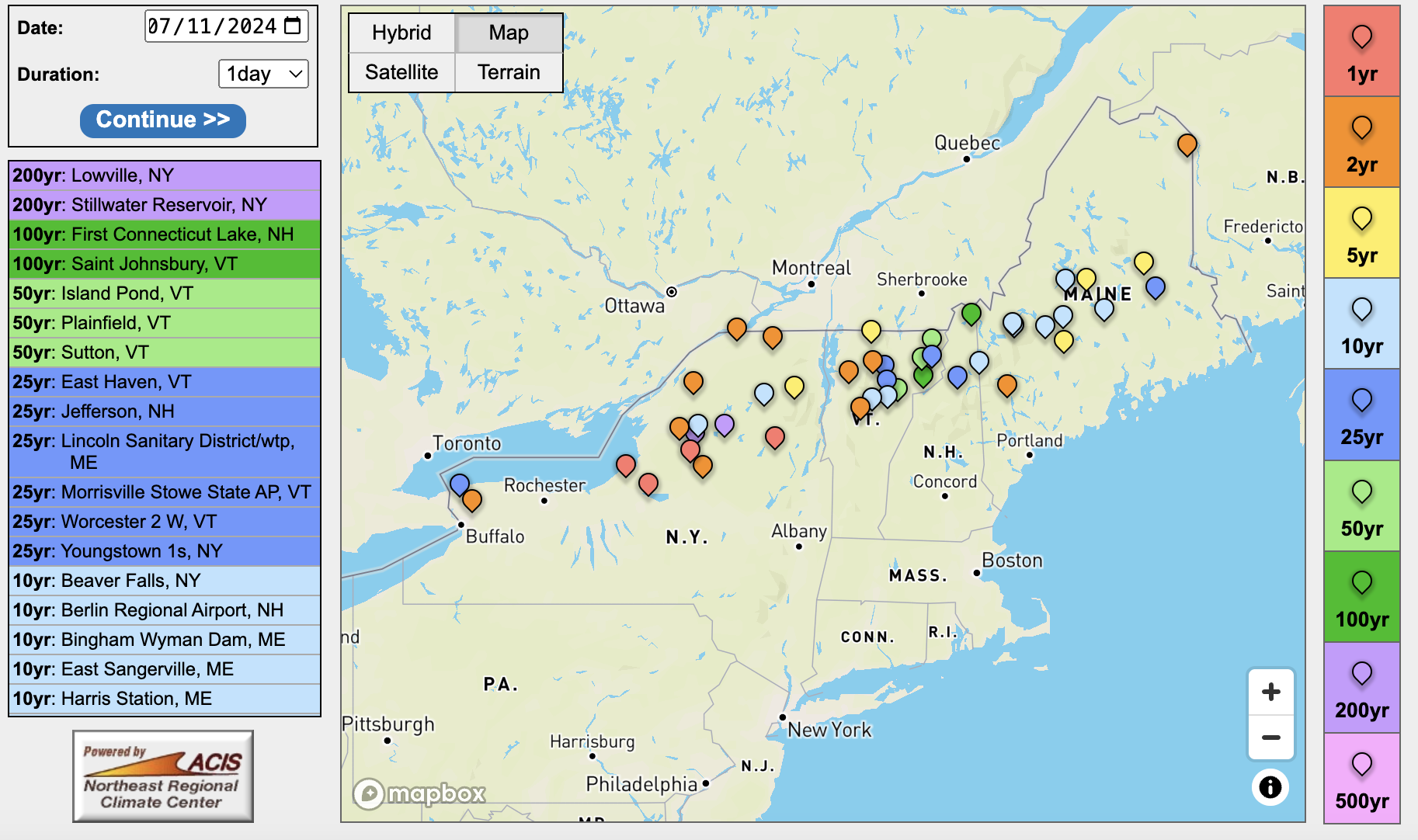
Extreme Weather in the Northeast
The Northeast has seen multiple types of extreme weather this July. Parts of the Mid-Atlantic are experiencing extreme drought for the first time in over a decade. Temperatures, particularly low temperatures, have been record or near-record hot. Preliminary data indicates that New York has likely seen its most tornadoes in a single month on record. Areas of Vermont, northern New Hampshire, and northern New York saw significant flash flooding. These extreme events have caused a multitude of impacts and contributed to several deaths.
Read more in the NRCC BlogClimate News

Exceptionally Active Hurricane Season Predicted
The 2024 Atlantic hurricane season is likely to be extremely active, according to NOAA’s Climate Prediction Center. The outlook calls for 17 to 25 named storms, of which 8 to 13 are expected to become hurricanes, including 4 to 7 major hurricanes. This is compared to an average season of 14 named storms including 7 hurricanes and 3 major hurricanes (based on data from 1991 to 2020). Multiple factors such as exceptionally warm Atlantic sea surface temperatures, a developing La Nina, and reduced wind shear are expected to align to potentially make this season very active. The greatest number of named storms in the Atlantic was 30 in 2020, while the greatest number of hurricanes was 15 in 2005. Both of these years also featured a record-tying 7 major hurricanes. The Atlantic hurricane season runs from June 1 through November 30, peaking from mid-August to late October.
Website Highlights
Weather Station Data
Weather Station Data includes location-specific information, such as wind data, evapotranspiration, and daily almanacs.
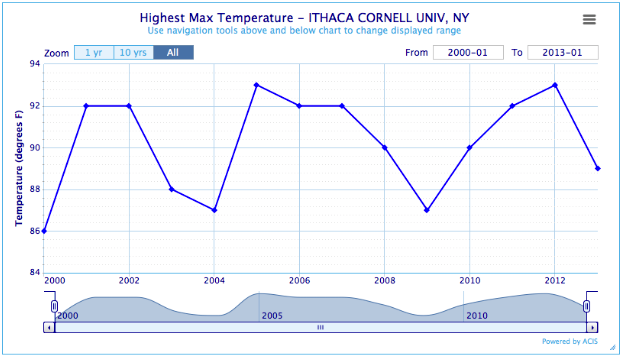
CLIMOD 2 is a user-friendly website to find single-station and multi-station climate products for locations accross the country. For example, the Seasonal Ranking report produces a graph and table of extremes or other summaries for a specified period for each year.
Go to CLIMOD 2State & Regional Analyses
These provide several map types, regional climate summaries, snow survey data, and drought information.
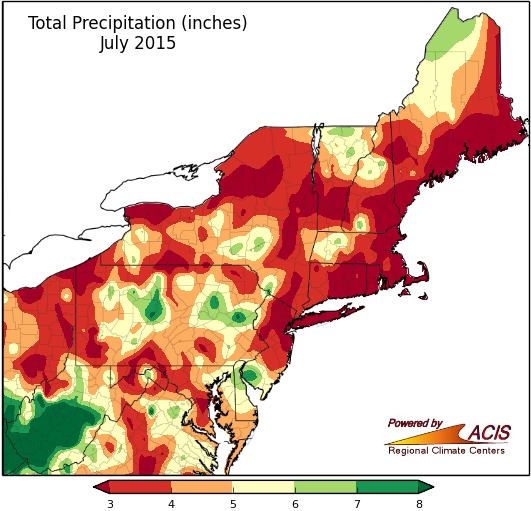
The Monthly Maps offer a variety of monthly precipitation and temperature departure maps for any given month for the Northeast region or a selected state.
Go to Monthly Map pageAnalyses for Industry
Analyses for Industry shows products the NRCC has created through partnerships with various industries.
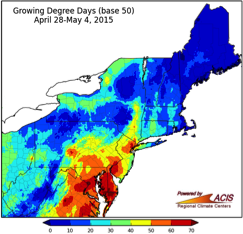
The Turf Grass page offers weather for the turfgrass industry, including disease risk, turf and weed development, irrigation information, and heat stress.
Go to Turfgrass pageClimate Change Resources
Climate Change Resources includes normal difference maps as well as climate links.
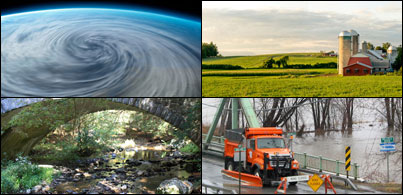
Climate Links offer an abundance of resources for the Northeast across multiple sectors …
Go to Climate Change Resources pageWebinars & Workshops
Webinars & Workshops provides recordings and presentations from the monthly webinar series, as well as information on past and upcoming workshops.

The Northeast Regional Climate Center hosts a monthly webinar series with NOAA affiliates to address timely weather and climate concerns.
Go to Monthly WebinarsPublications & Services
Publications & Services includes the NRCC blog, quarterly outlooks, as well as other reports and publications.
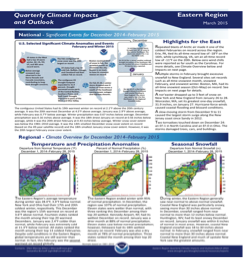
The Quarterly Outlooks are seasonal climate highlights and outlook for the upcoming season for the Eastern, Region, Great Lakes, and Gulf of Maine. Published in March, June, September and December.
Go to Quarterly Reports